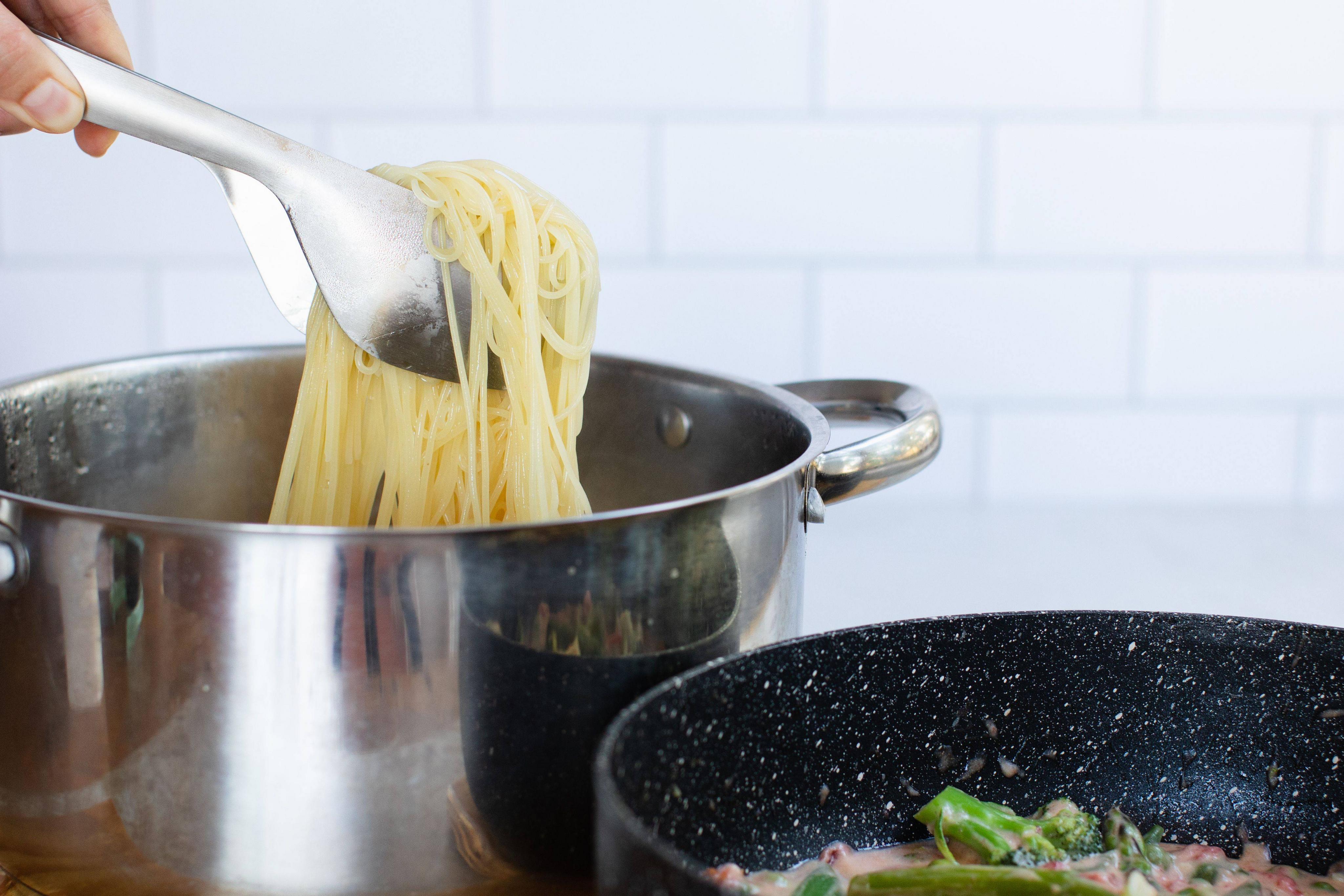
Acorn squash is also known as Des Moines or pepper squash. It has a sweet, round flesh inside and longitudinal ridges at its exterior. Though it is a winter squash, it belongs to the same species as summer squashes. If you enjoy squashes, there are many ways to make them delicious. Here are some ways you can make acorn pumpkin delicious and healthy. You can use it as a healthy substitute for other starchy vegetables.
Microwave cooking of acorn squash
Microwaving is a great way to cook acorn squash. In fact, cooking this type of squash is not difficult at all. The only thing you need to do is cut the acorn squash into half and remove the seeds. Rinse the squash. Salt and pepper the squash and place it on an oven-safe plate. Acorn squash can be mashed and peeled by microwaving. Mix in some butter and sugar. Season with salt.
Before cooking acorn squash in the microwave, be sure to choose one with a smooth skin and dense flesh. Acorn squash can be purchased in varying sizes - from one to three pounds - and the bigger the squash, the longer it will take. If you are unsure, you can cut it vertically with a sturdy chef's knife to prevent breaking the stem. Once the squash has been cut, separate the pieces using your hands.

As a substitute for starchy vegetables, you can use acorns squash
Acorn squash can be used as a replacement for starchy vegetable in many ways. Acorn squash is rich in fiber, vitamin C, potassium, magnesium, and vitamin A and B. This versatile vegetable is best served roasted. You can stuff it with quinoa or pumpkin seeds, as well as cheese. Acorn squash can also be used in sweet and savory dishes.
Acorn squash contains plant pigments known as carotenoids, which are potent antioxidants. Alpha-carotene, a key component of Acorn Squash, is especially abundant. This may help prevent certain types or cancers as well as mental decline. It also has plenty of vitamin A and soluble as well as insoluble fiber. These nutrients regulate blood sugar levels, and promote regular bowel movements. This plant is also versatile and delicious, as well as having health benefits.
Health benefits of acorn squash
Vitamin C is a key component of the Acorn Squash, which is essential for cancer treatment. This mineral acts a "targeting ingredient", meaning that it aids in the killing of cancer cells. Vitamin C can be used alone to treat ovarian and lung cancers. Acorn squash also promotes the formation of collagen, which helps the skin to stay smooth and bright.

Fiber in Acorn squash is a type diet fibre that helps regulate blood sugars and cholesterol. A half-cup of this winter squash will provide more than three times the fibre of a cup full of cooked Oat bran. Adults need 38g per day, while older women and men need as much as 30g. Acorn squash contains soluble fibre which is the best type for those on a low-carb diet.
FAQ
Are there any requirements to become a chef?
No. Many chefs started their careers by learning on their own. Some went to culinary school simply to gain experience. Many chefs prefer to attend culinary school for the increased opportunities to learn and grow as professionals. Culinary schools offer hands-on training which allows students to improve their skills and knowledge of cooking.
How can I motivate myself to cook?
Sharing food with friends and family is a great way to have fun cooking. However, cooking for yourself is much easier than cooking for others. You can be inspired to cook if you try something new. This will allow you to discover new recipes and techniques. It's also possible to use recipes from other cultures in order to broaden your culinary knowledge.
How Do I Learn About Cooking?
There are numerous cooking classes offered across the country. You can find courses in baking, pastry and wine tasting at many schools. You can take a class at your local vocational school or community college if you are interested in learning more about cooking.
What skills is required to attend culinary school
To become a chef, you must be able to cook well, work under pressure, and understand food safety regulations. Cooking classes can be taken at high schools and community colleges to learn the basics of cooking. After mastering the basics, you'll be able to apply for a job at a catering or restaurant.
Can I cook with my family?
Yes! Kids love to help in the kitchen. It's a fun activity which teaches children responsibility and teamwork. Children can help in everything, from washing vegetables and cutting onions. They will enjoy helping you to cook if your children are safe with knives.
What are the qualifications to be a chef?
To be a chef you need a bachelor's level in culinary arts. In addition, you need to pass a series of tests administered by the ACF. A certificate will verify your qualifications once you have met all of these requirements.
How much does it cost to study Culinary Arts?
Prices for studying culinary arts vary widely. A four year degree is typically around $40,000. A two-year associate's level degree can cost less than $5,000. Tuition costs vary depending on which program you choose. Public institutions are more expensive than private institutions.
Statistics
- According to the BLS, chefs earn $58,740 a year. (learnhowtobecome.org)
- On average, chefs earn $58,740 a year, according to the BLS. - learnhowtobecome.org
- The median pay for a chef or head cook is $53,380 per year or $25.66/hour, according to the U.S. Bureau of Labor Statistics (BLS). (learnhowtobecome.org)
External Links
How To
How to make an omelet that is perfect
Omelets is one of my favourite breakfast foods. But how do they turn out so perfectly? I have tried many different recipes and methods, but none of them work. So I am sharing some tips and tricks today to help you make fluffy, delicious omelets every morning.
Before we start making omelets, let's remember that eggs are temperamental. Eggs must be purchased fresh, preferably organic, and kept chilled until ready for cooking. You must keep them cool enough to allow the whites to form properly and the yolks to become too runny if they're not kept at the right temperature. This causes your omelets to look oddly colored. If you plan to cook the eggs right away, it is best to use room temperature eggs.
Another tip is to separate the egg before adding it to the pan. It is important not to allow any white to mix with the yolk as this could lead to the omelet becoming curdled.
If you add the egg directly onto the stovetop, you might end up burning the bottom part of the egg, which would ruin the texture of your omelet. Instead, place the egg in the microwave for 10 second before you put it in the skillet. The microwave heat cooks the eggs just right without overcooking them.
Next, let's discuss mixing the eggs. Mixing eggs together is important. You need to beat them well. To do this, grab the bowl of the mixer and turn it upside down. Next, shake the bowl vigorously. This way, the air inside the bowl gets whipped around and mixes the egg thoroughly.
Now comes the fun part - pouring the milk into the mixture. First, pour half of the milk into the beaten eggs and then fold the eggs gently into the remaining milk. If you still see streaks of eggs, don't worry. These streaks will disappear once the omelet has been turned over.
After you have folded your eggs, heat up the oil on medium heat. Wait for it to get hot. Add 1/4 cup butter to the oil and swirl it around to coat all sides of the pan. Open the lid and sprinkle salt on the pan. A pinch of salt will prevent your omelet from sticking in the pan.
Once the omelet has formed completely, cover the pan and let it set for a few minutes. Flip the omelet upside down or with a spatula. Cook the other side for about a minute. Take out the omelet and place it in a bowl.
This recipe is best when used with whole milk. But, you can use skimmed milk as well.